Brain Tumour
A brain tumour is a growth of cells in the brain that multiplies in an abnormal, uncontrollable way. Grades and types of brain tumour
Brain tumours are graded according to how fast they grow and how likely they are to grow back after treatment.
Grade 1 and 2 tumours are low grade, and grade 3 and 4 tumours are high grade.
There are 2 main types of brain tumours:
- Non- cancerous (benign) brain tumour
- Cancerous (malignant) brain tumour
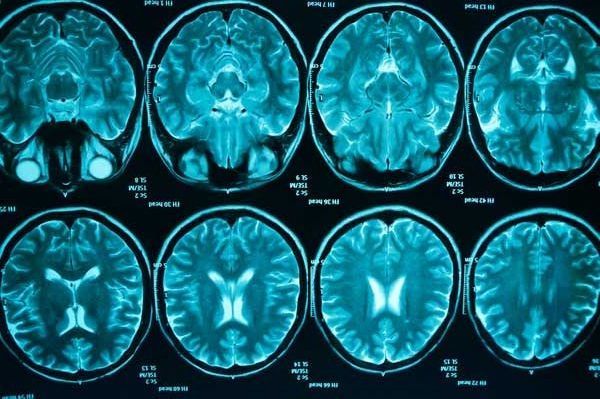
Non-cancerous (benign) brain tumours:
– these are low grade (grade 1 or 2), which means they grow slowly and are less likely to return after treatment
Cancerous (malignant) brain tumours
– these are high grade (grade 3 or 4) and either start in the brain (primary tumours) or spread into the brain from elsewhere (secondary tumours); they're more likely to grow back after treatment.
Symptoms of a brain tumour
The symptoms of a brain tumour vary depending on the exact part of the brain affected.
Common symptoms include:
- headaches
- seizures (fits)
- persistently feeling sick (nausea), being sick (vomiting) and drowsiness
- mental or behavioural changes, such as memory problems or changes in personality
- progressive weakness or paralysis on one side of the body
- vision or speech problems
- Sometimes you may not have any symptoms to begin with, or they may develop very slowly over time.
Benign Brain Tumour (non-cancerous)
A benign (non-cancerous) brain tumour is a mass of cells that grows relatively slowly in the brain. Non-cancerous brain tumours tend to stay in one place and do not spread. It will not usually come back if all of the tumour can be safely removed during surgery.
If the tumour cannot be completely removed, there's a risk it could grow back. In this case it'll be closely monitored using scans or treated with radiotherapy.
Types and grades of non-cancerous brain tumour
There are many different types of non-cancerous brain tumours, which are related to the type of brain cells affected.
Examples include:
- gliomas – tumours of the glial tissue, which hold and support nerve cells and fibres
- meningiomas – tumours of the membranes that cover the brain
- acoustic neuromas – tumours of the acoustic nerve (also known as vestibular schwannomas)
- craniopharyngiomas – tumours near the base of the brain that are most often diagnosed in children, teenagers and young adults
- haemangioblastomas – tumours of the brain's blood vessels
- pituitary adenomas – tumours of the pituitary gland, a pea-sized gland on the under surface of the brain
Brain tumours are graded from 1 to 4 according to how fast they grow and spread, and how likely they are to grow back after treatment.
Non-cancerous brain tumours are grades 1 or 2 because they tend to be slow growing and unlikely to spread.
The not cancerous brain tumour can often be successfully treated, but they're still serious and can be life threatening.
Symptoms of non-cancerous brain tumours
The symptoms of a non-cancerous brain tumour depend on how big it is and where it is in the brain. Some slow-growing tumours may not cause any symptoms at first.
Common symptoms include:
- new, persistent headaches
- seizures (epileptic fits)
- feeling sick all the time, being sick, and drowsiness
- mental or behavioural changes, such as changes in personality
- weakness or paralysis, vision problems, or speech problems
Malignant Brain Tumour (brain cancer)
A malignant brain tumour is a cancerous growth in the brain. It's different from a benign brain tumour, which isn't cancerous and tends to grow more slowly.
Symptoms
The symptoms of a brain tumour depend on where it is in the brain.
Common symptoms include:
- headaches (often worse in the morning and when coughing or straining)
- fits (seizures)
- regularly feeling sick (vomiting)
- memory problems or changes in personality
- weakness, vision problems or speech problems that get worse
- See a GP if you have symptoms of a brain tumour that don't go away. It's unlikely to be a tumour, but it's best to be sure.
Types
There are lots of types of brain tumour. They have different names depending on where they are in the brain. They're also given a number from 1 to 4, known as the grade.
The higher the number, the more serious a tumour is:
- grade 1 and 2 brain tumours are non-cancerous (benign) tumours that tend to grow quite slowly
- grade 3 and 4 brain tumours are cancerous (malignant) tumours that grow more quickly and are more difficult to treat
Brain tumours are also called primary (which start in the brain) and secondary (which spread to the brain).
Treatments
Treatment for a brain tumour aims to remove as much of it as possible and try to stop it coming back.
The main treatments are:
- surgery – a small section of skull is removed and the tumour is cut out before the piece of skull is fixed back in place
- radiotherapy – radiation from an external machine is used to kill cancer cells after surgery
- chemotherapy – medicine is used to kill cancer cells after surgery, or relieve symptoms if the tumour can't be removed
- radiosurgery – lots of tiny beams of radiation are aimed at the cancer to kill it if you can't have surgery
- carmustine implants (glial wafers) – a new way of giving chemotherapy for some high-grade tumours, where implants are inserted into the brain
- Medicines may also be used to relieve symptoms like headaches, seizures and being sick (vomiting).
Outlook
The outlook for a malignant brain tumour depends on things like where it is in the brain, its size, and what grade it is. It can sometimes be cured if caught early on, but a brain tumour often comes back and sometimes it isn't possible to remove it.
Recovery and after effects
After treatment, you might have some lasting problems, such as:
- seizures
- walking difficulties
- speech problems
You may need treatment and support like occupational therapy and physiotherapy to help you recover or adapt to any problems.
It's important to follow a healthy lifestyle to lower your risk of stroke. This means stopping smoking if you smoke, following a healthy diet and doing regular exercise.
You may be able to gradually return to your normal activities as you recover, although some things (like contact sports) may need to be avoided for life.
Side effects of treatment
Some people who have had a brain tumour can develop side effects from treatment months or years later, such as:
- cataracts
- epilepsy
- problems with thinking, memory, language or judgement
- very rarely stroke can happen
BRAIN CANCER DATA Period 2019 -2024
Hospital Trials and Treatment with our NEW Medication
BRAIN CANCER DATA Period 2019-2024
Mortality in EU 2019-2024: 58,342; (EU hospitals Standard Treatments)
Mortality in the UK 2019-2024: 17,003 (UK hospitals Standard Treatments)
Result by Starting using our New Medication/Treatment
(Testing period 2019-2024 all age groups):
Tested patients in UK, Switzerland, Germany and Italy: 192,477
Fully recovered: 19%
Recovered (No treatments needed for period of 2 years, monitoring every 6 months): 22%
Partially Recovered (Further treatments needed as precaution after 3-6months passed): 42%
Unknown Recovery/ Non-recovery: 16%
Deaths in total: Less than 1% (The highest % in the group 46-65).
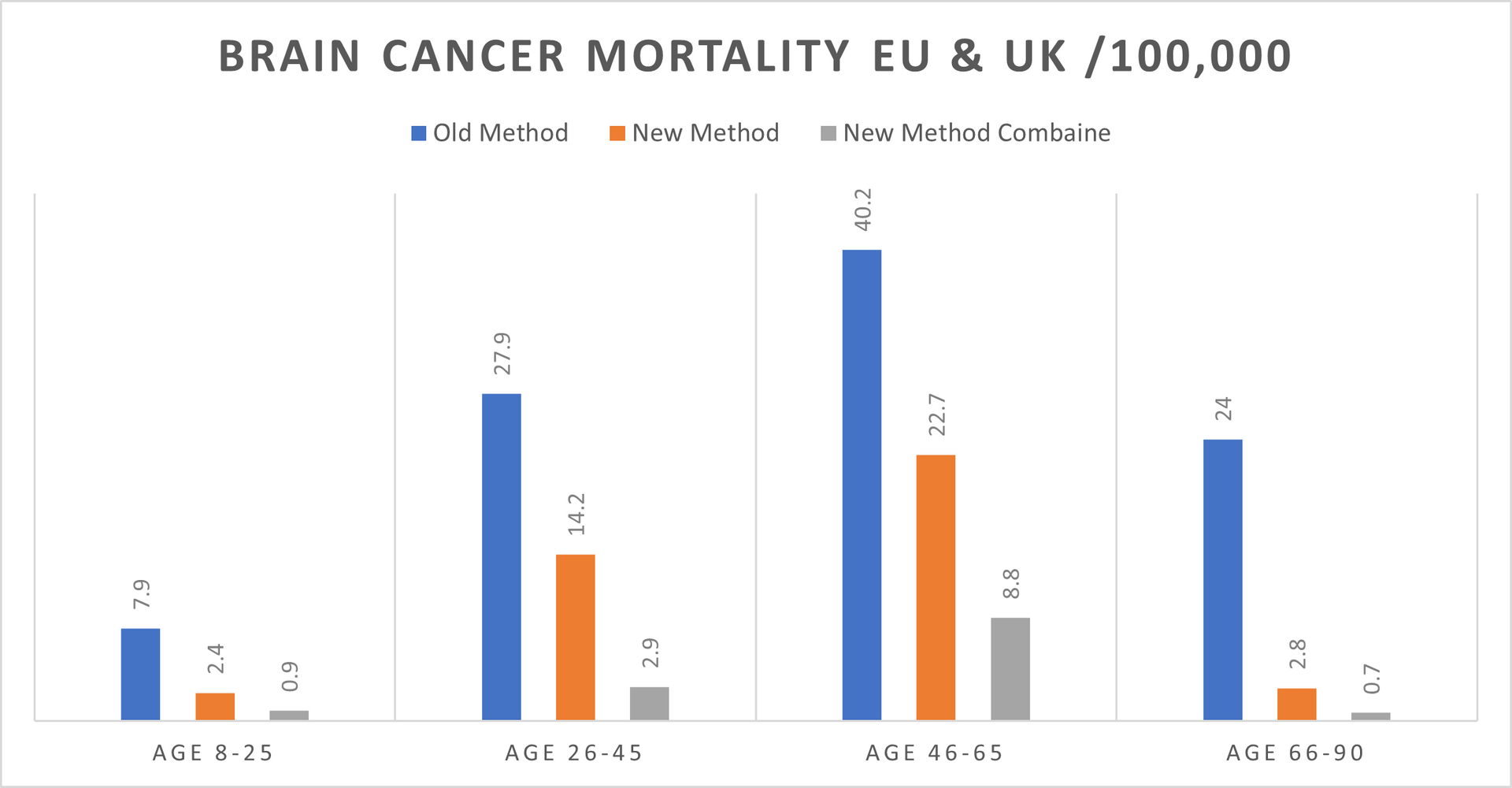
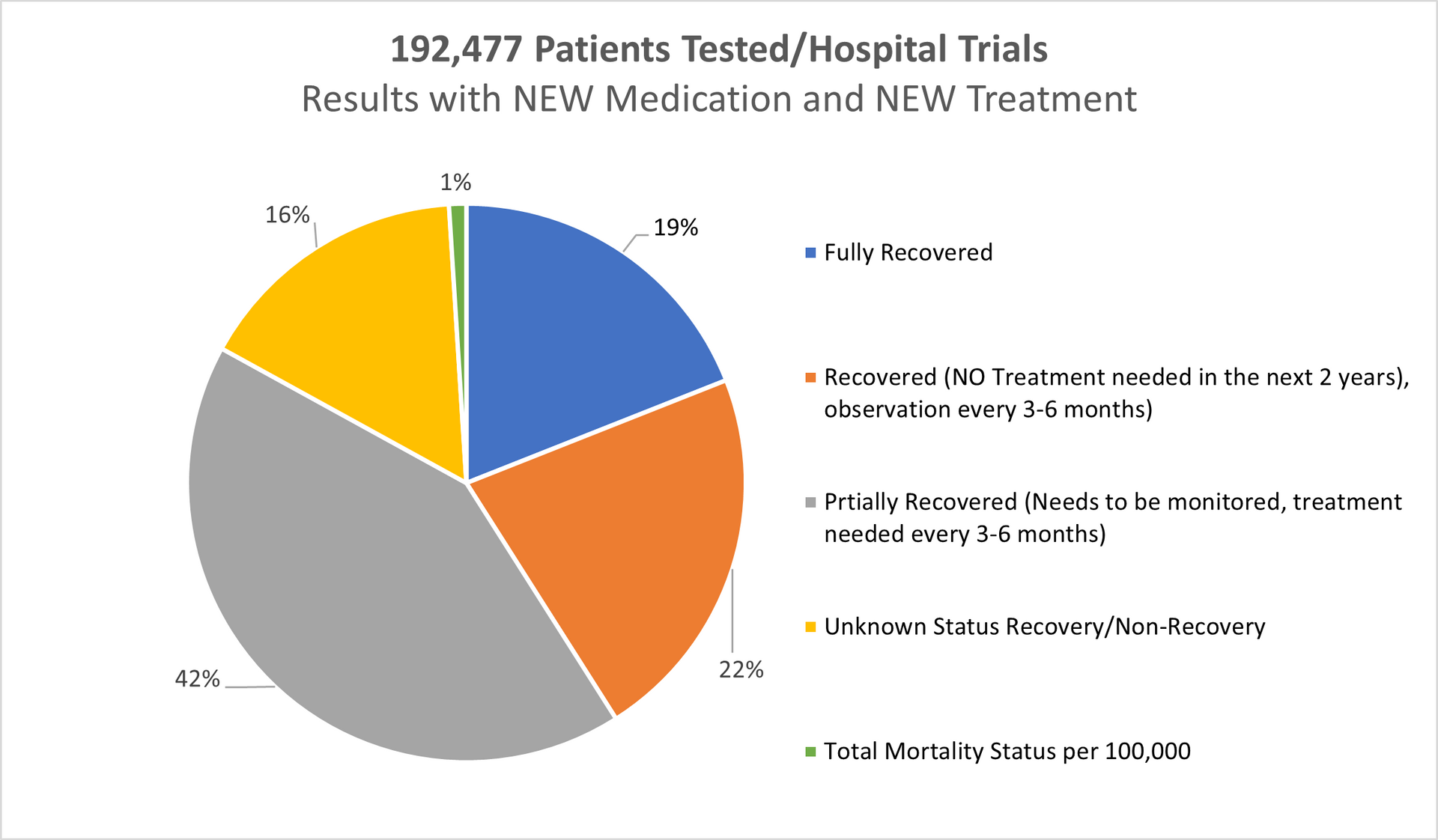
REFERENCES TO THE DATA ABOVE (Period 2019-2024):
Age Gap:
The youngest person was not even 8 years of age
The oldest person was nearly 90 years of age
Gender:
Female: 88,983 of 192,477
Male: 103,494 of 192,477
- Age group 8-25 > 4.4%
- Age group 26-45 > 28.6%
- Age group 46-65 > 45.7%
- Age group 66-90 > 21.3%
---------------------------------
Total: 100%
========================
Methods:
Old Methods meaning the STANDARD METHODS used by the hospital on a daily basis for the last minimum 5 years in Europe and in the United Kingdom.
New Methods meaning our NEW MEDICATION/TREATMENT with which we came out after over 14 years of research and tests.
New Methods Combine meaning our NEW MEDICATION/TREATMENT COMBINED in double parallel treatment > NEW MEDICATION and different way of treatment combined with chemotherapy or combined with radiotherapy or combined with chemo and radiotherapy.
Separately we tested our NEW MEDICATION combined with "OLD" methods used by the hospitals in Europe and in the United Kingdom however, the final readings cannot be 100 percent accurate and cannot be as such used for whatever comparison.
Mortality:
In the Europe 2019-2024 > 15.9%
In the United Kingdom 2019-2024 > 12.4%
With our NEW Medication/Treatment in Europe & United Kingdom 2019-2024 > Less then 1%.
The % of "Unknown Recovery / Non-Recovery" went up (2018/23 was 15%) to 16.1% mainly in the age group 32-44 which we believe has increased due to usage of control drugs or drugs, heavily drinking and smoking. This group is now monitored separately.
There is an increase of mortality in Europe for 1.1% while in the UK mortality went up by 1.2%.
All patients being chosen randomly what also might be the point of under 1% mortality rate.
OUR RESEARCH and MORTALITY DATABASE 2019-2024
Cancer is one of the biggest health challenges worldwide. Since starting the research in 2011/12, the percentage of all deaths from cancer has risen from 9.6% in 2011 to 14.9% 10 years later; in the last 5 years this has risen again to where we now have 16.2% of all deaths recorded as cancer deaths.
Taking into consideration that in the period 2019-2024 the average European and the United Kingdom population was 760.3 million, an average 4,880,664 new cases were reported yearly during the same period. This is an ASR of 280, and a cumulative risk of 29.8%.
Breast, Colorectum, and Lung cancers were the most common cancers across both sexes.
The male population in this period, some 370.2 million, recorded an average of 2,482,117 new cancer cases per year; an ASR of 321.4 per 100,000 and a cumulative risk of 33.1%.
The top 3 most common cancers among males were Prostate, Lung, and Colorectum cancer.
The female population in this period, some 390.1 million, recorded an average 2,398,547 new cancer cases per year; an ASR of 258.6 and a cumulative risk of 26.5%.
The top 3 most common cancers in females were Breast, Colorectum, and Lung cancer.
A significant point with cancer in the female population was the drop in lung cancer to 3rd place, with colorectum cancer overtaking the 2nd place.
Our mortality database is a collection of death registration data which includes cause of death information from member states; we use only the data which has been properly coded to the International Classification of Diseases (ICD).
What has also changed in recent years is the age of the death rate. This had declined over time in several countries due to life improvements, early diagnoses, medical advances, and a general reduction in risk factors like smoking and even drinking. However, there is a worrying emerging trend with rates of cancer in the population group aged up to 16.
This is rising well over expectations, especially in the United Kingdom, Spain and France.
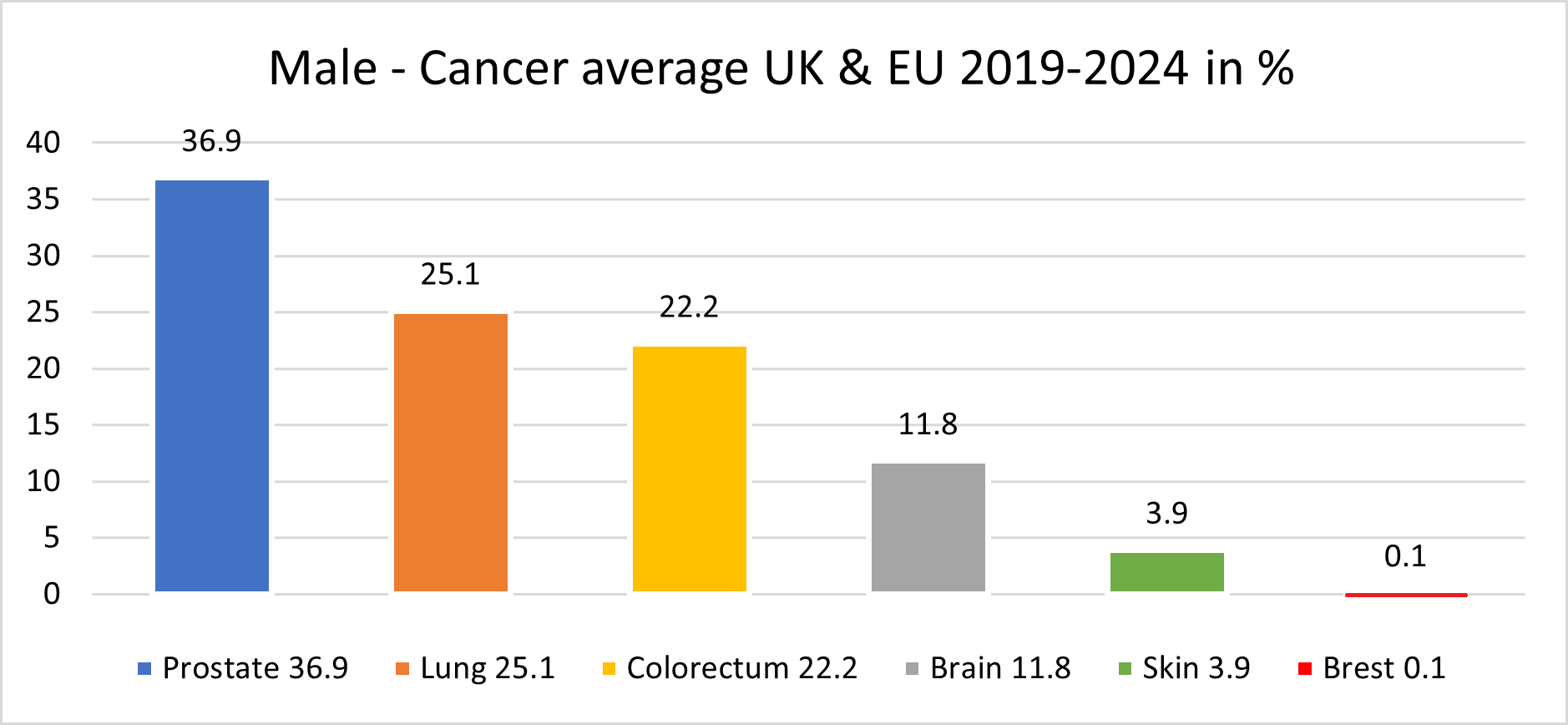
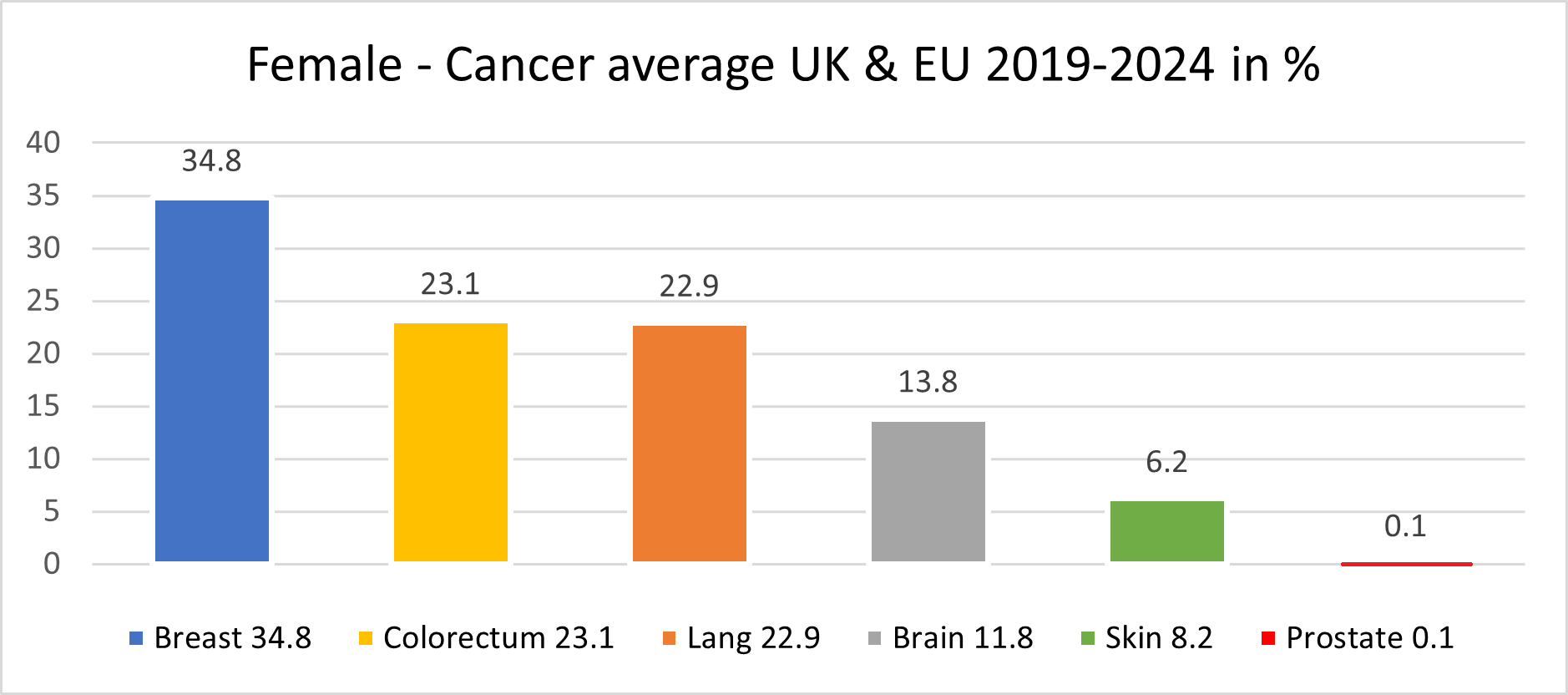
Our mortality database is a collection of death registration data which includes cause of death information from member states; we use only the data which has been properly coded to the International Classification of Diseases (ICD).
What has also changed in recent years is the age of the death rate. This had declined over time in several countries due to life improvements, early diagnoses, medical advances, and a general reduction in risk factors like smoking and even drinking. However, there is a worrying emerging trend with rates of cancer in the population group aged up to 16.
This is rising well over expectations, especially in the United Kingdom, Spain and France.
PERIOD 2018 -2023
BRAIN CANCER DATA
Brain Cancer Data Period 2018-2023
Mortality in EU 2018-2023: 55,845; Mortality in UK 2018-2023: 15,007 (EU & UK Standard Treatments)
Result by Starting using our New medication
(Testing period 2018-2023 all age groups):
Tested patients in UK, Switzerland, Germany and Italy: 173,821
Fully recovered: 19%
Recovered (No further treatments needed for period of 2 years, monitoring every 6 months): 23%
Partially Recovered (Further treatments needed as precaution after 3-6months passed): 42%
Unknown Recovery/ Non-recovery: 15%
Deaths in total: 1% (Mostly people age 46-65 and 66-68).

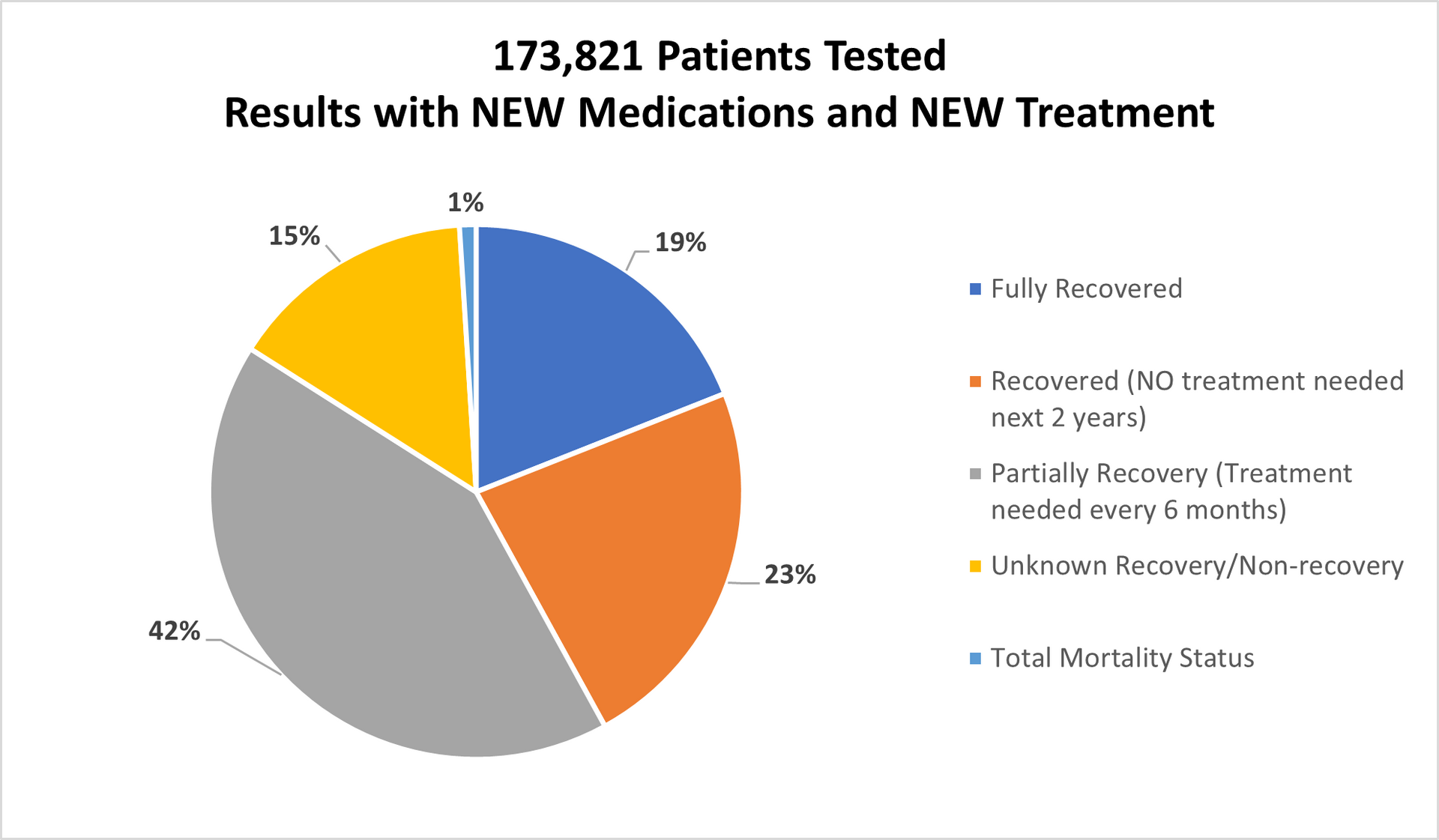
REFERENCES TO THE DATA ABOVE:
Age Gap:
The youngest person was of 18 years of age
The oldest person was well over 88 years of age
Gender:
Female: 72,888 of 173,821
Male: 100,933 of 173,821
- % of age group 18-25 was 3.8%
- % of age group 26-45 was 27.9%
- % of age group 46-65 was 43.1%
- % of age group 66-88 was 25.2%
Methods:
Old Methods meaning the standard methods used by hospital on daily basis for last minimum 5 years in EU and in the UK.
New Methods meaning our medication/treatment with which we came out after over 12 years of research and test.
New Methods combine meaning our medication/treatment combined in double parallel treatment > new medication and different way of treatment
Separate there are also results of our new medication/treatment combined with "old" methods however the final readings cannot be 100 percent accurate and cannot be as such used for whatever compares.
Mortality:
In the Europe 2018-2023 > 14.8%
In the United Kingdom 2018-2023 > 11.2%
With our medication/treatment in Europe & United Kingdom 2018-2023 > Just above 1%.
The % of "Unknown Recovery / Non-Recovery" gone up (2017/22 > 9%) for 6% mainly in group age 26-45 which we believe that increase because of usage of control drugs or drugs, heavily drinking and smoking. This group is now monitored separately.
There is increase of mortality in Europe for 2.4% while in UK mortality gone down by 0.2%.
All patients being chosen randomly.
